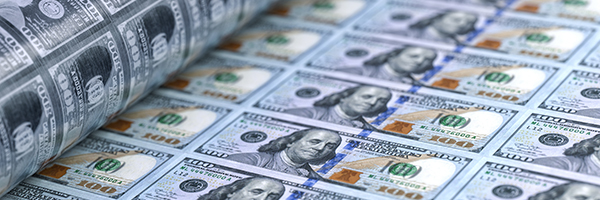On March 23, the Federal Reserve announced that it would create a facility to buy corporate bunds and ETFs tracking the corporate bond market.
That facility remained an all-talk/no-action vehicle until today when the New York Federal Reserve Bank announced that its Secondary Market Corporate Credit Facility will begin buying shares of ETFs invested in corporate debt. The facility becomes the first Fed program to use some of the $454 billion in funding included in the coronavirus rescue legislation.
So far just the announcement that the Fed was going to set up a program to backstop the corporate bond market has had a huge effect on that market. With the news of the Fed’s backstop for that market, companies rushed to issue investment grade debt with the final week of March seeing record supply of $260 billion hit the market. April saw another $285.6 in sales of corporate debt. Add another $93 billion in the first week of May. Credit spreads are wider than they were before the pandemic, but on average remain 160 basis points tighter than on March 23.
So powerful has the announcement of the program been that there’s now not much need for the Federal Reserve to do any actual buying. Which looks to be the way the Fed prefers things if you consider how it set up the rules for the program. The fees for the program are a relatively high 1% and the Fed will only purchase debt due in four years or less. Many of the companies issuing debt lately have been looking to extend the maturities of their bonds. PayPal and Walt Disney, for example, priced 30-year bonds on Monday.
This mirrors the approach that the Fed is taking with its purchases in the municipal bond market with its Municipal Liquidity Facility. Fees there are a hefty 1.5 percentage points even for states and cities with top ratings.
The new corporate facility will work through an agreement that the Fed has struck with BlackRock. That investment company will buy ETFs in the corporate market for the Fed. (BlackRock is one of the largest operators of ETFs; to my mind theres a high degree of conflict of interest here, but, hey, what do I know.)
At the moment fears that the Fed would distort the market by launching a wave of purchases seem unfounded. The Fed looks like it wants to operate as a buyer of last resort that doesn’t need to do much more than hover in the background and reassure the market by its mere presence.
What should happen if we ever reach a “last resort” moment is anyone’s guess.
And, I’d add, the Fed’s corporate bond purchases, even if mostly on paper, have set Wall Street lusting after a similar facility to buy stocks.


